#thomas mott
Text
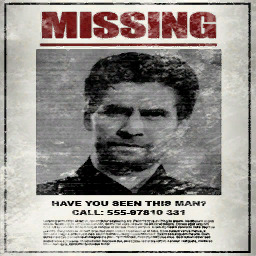
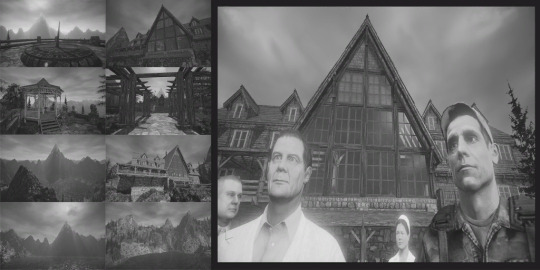

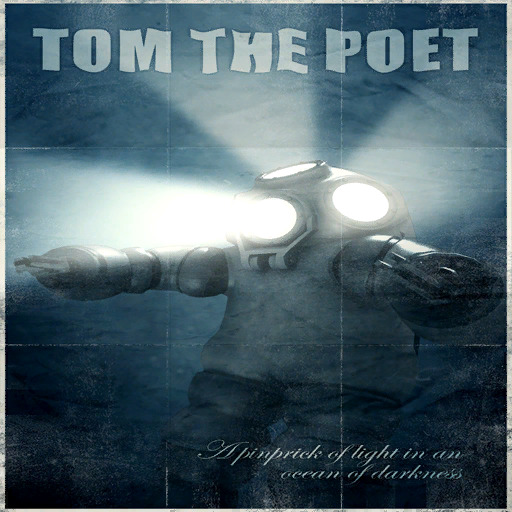
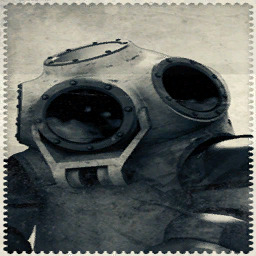
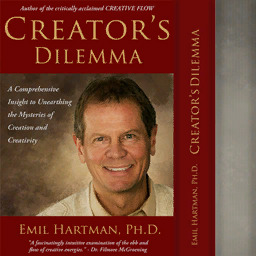



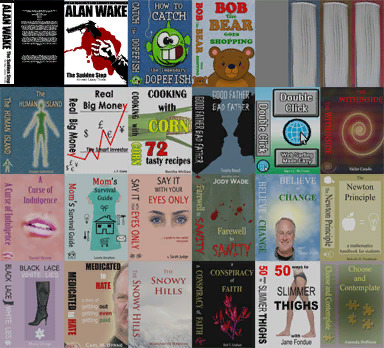
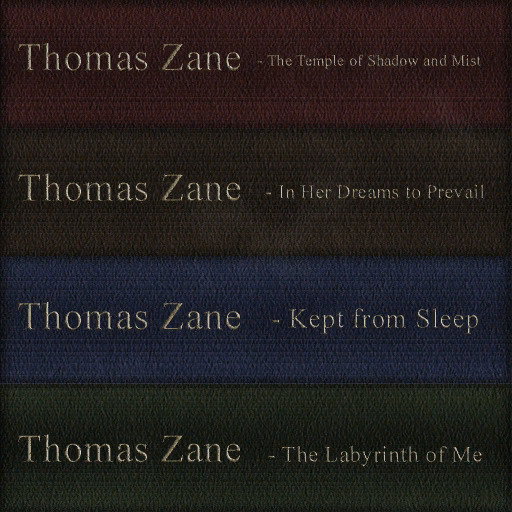
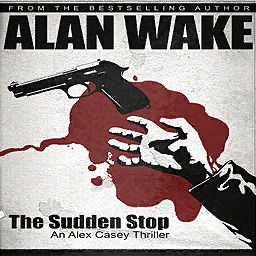
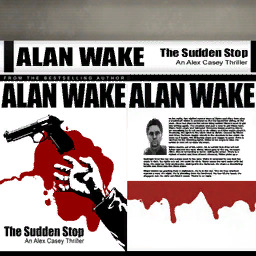
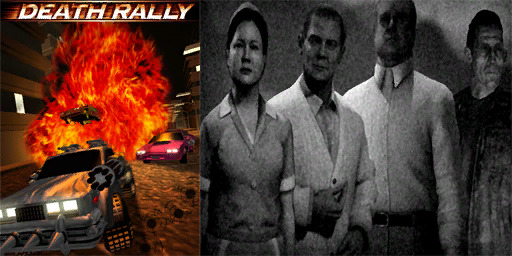


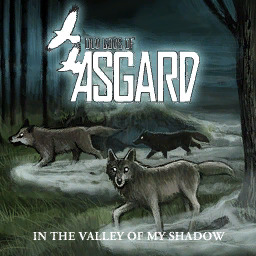



assorted textures i found hEHEHEHEHEHEHh!!
#alan wake#alan wake 1#aw1#my datamining adventures#tom zane#thomas zane#the poet the diver#emil hartman#and his fucking gang#whats that guy called#mott?#ben mott
84 notes
·
View notes
Text

My friend told me that Evan peters is ugly (I ghosted them after)
#evan peters supremacy#evan peters x reader#evan peters fandom#evan thomas peters#evan peters#the evans#evan peters fanfic#evan peters fluff#evan peters fic#evan thomas peters fandom#jpm x reader#austin sommers x reader#edward philippe mott x reader
32 notes
·
View notes
Text

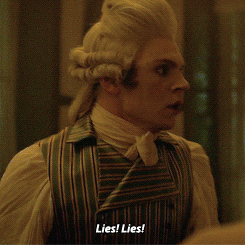

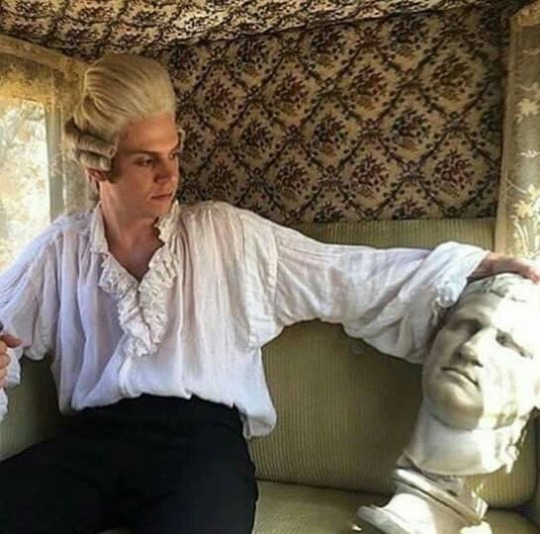
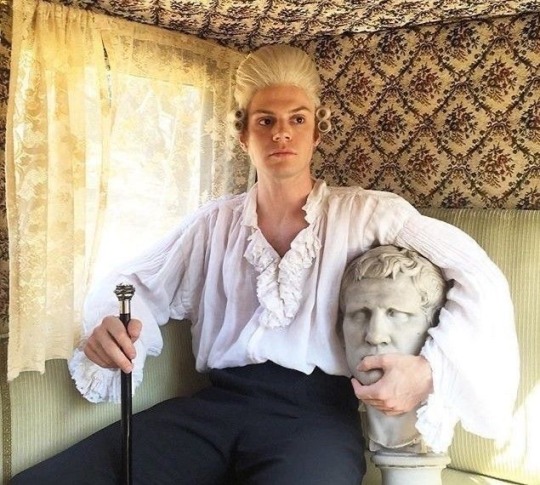


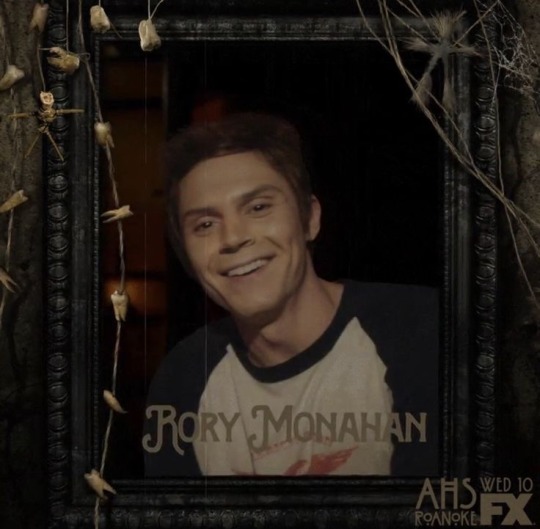

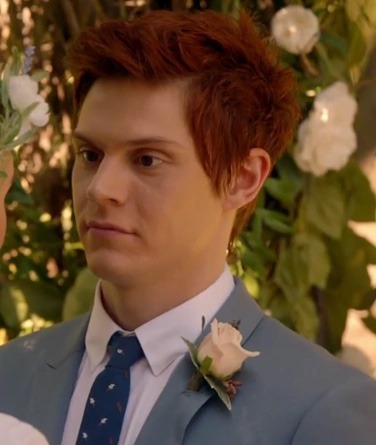
Seven years ago today, AHS: Roanoke premiered and gave us Edward Mott & Rory Monahan ❤️ (Evan Peters)
#evan peters#evan thomas peters#evanpetersgoddess#evan peters fandom#evanpetersfandom#evan peters edits#james march#james patrick march#kai anderson#rory monahan#Edward Mott#american horror story#ahs roanoke
21 notes
·
View notes
Text
"Thus, the declared purpose of modern prison reform, one gathers, is: To make the prison an institution which will reform the criminal.
As I sat in my cell, year after year, reading the articles, books and speeches in which the penologists were enunciating this doctrine, I waited eagerly for some sign of change in the actual administration of the prison. But nothing happened. I waited in vain.
For I am obliged to record the fact that, during the years I spent in the state prisons of New York and Massachusetts, not a single attempt was ever made to reform me, and that I did not see a single attempt officially to reform criminals as an aim of prison administrative policy.
I remember, in this connection, talking one day with the late Thomas Mott Osborne about the prison-reform movement. He said, among other things: "It is so discouraging. People flock to the meetings; they are remarkably sound in their responses; the shocked, moved, indignant at the right moments; they applaud vigorously; they come up to the rostrum after the meeting and offer their money and services; and then they go to their homes and forget all about it. They simply will not do anything."
For a time I was inclined to accept this explanation; that people in the outside world are simply indifferent about prison conditions. But lately I have been persuaded that it is not mere indifference, but actual satisfaction with existing conditions, which is responsible for society's delay in changing the prison "from a human scrap-heap into a human repair-shop." It must be, I have decided, that the majority of people still believe in the ancient doctrine of "an eye for an eye, and a tooth for a tooth," and regard the prison as the place where the criminal shall expiate his sins.
If, therefore, the real (as it is the declared) object of imprisonment is the reformation of the convict, then, as matters stand at present, the American prison is a most abject failure as a social institution.
It is banal to state that in order to fulfill the reformation purpose the prison environment must be greatly altered. Yet, whenever any attempt is made to do so, there instantly arises a loud and persistent chorus of criticism, mainly from the daily press. The cry of pampered criminals, "men's clubs" arises and feeds the average law-abiding citizen's hatred of the criminal.
This is not to say that the criminal should be pampered and petted, or that the prison should be made a cross between a night club and a health resort. Neither is it to say that the prison should remain a steel-barred stone coffin, as it continues to be in most states. It is simply to say that before the prison can achieve its object many substantial changes must be made; and that it will be well for the arm-chair critics, who create such a disturbance at each attempt to make such changes, to realize that their prejudiced criticisms are of great harm, in the end, to that society of which they themselves are a part. For not until these changes are made will the prison be able to transform the criminal into the citizen."
- Victor F. Nelson, Prison Days and Nights. Second edition. With an introduction by Abraham Myerson, M.D. Garden City: Garden City Publishing Co., 1936. p. 42-45
#words from the inside#prisoner autobiography#penal reform#penal reformers#middle class ideology#american prison system#law and order politics#prison days and nights#victor nelson#history of crime and punishment#rehabilitation#political corruption#reading 2024#failure of rehabilitation#thomas mott osborne#purpose of incarceration
8 notes
·
View notes
Text
"i move the stars for no one" | masterlis / @rileyscissorhands

|Ri!|she/her|enfp|cancer|hufflepuff|
⭑*•̩̩͙⊱••••✩••••̩̩͙⊰•*⭑
ask box is open feel free to send things other than requests too im a silly funny girlie I'll respond!!
⭑*•̩̩͙⊱••••✩••••̩̩͙⊰•*⭑
➳ Request rules !
➳ just for reference, anything w a picture of a character and a quote above is a song lyric correlated to a character - all tagged #rileys song correlations
#evan peters#tate langdon#michael langdon#finn wittrock#cody fern#cillian murphy#dandy mott#tristan ahs#james patrick march#jimmy darling#kyle spencer#rory monahan#kai anderson#thomas shelby#jonathan crane#jeff pfister#luke cooper#peter maximoff#xavier ahs
12 notes
·
View notes
Text
I cry about each song from In The Light individually in hopes that it convinces everyone to listen to it
More under the cut
Prologue:
An intriguing opening, and I mean that in a good way. The initial vocals are quite ethereal and make you curious, then the story begins and you’re hooked. My first listen went like Oh? Oh. Oh.
I highly recommend.
Let Go of Me:
Protagonist song. Jeremy Jordan.
Aside from that, I am of the opinion that it’s clever writing. There are some allusions to other songs in the lyrics and some figurative language that gives me beautiful mental images. If the first song wasn’t enough to convince you that it’s a good album, there are so many others that could win you over.
Behind Closed Doors:
This one I like a lot. It’s grown on me quite a bit. There are so many fun elements and parts that draw you in. The lyrics are hospitable and make you feel like you’re being welcomed and introduced to their little corner of the world.
More:
It’s More. Under the cut. I think I’m funny. Anyway.
This is a peer pressure song and as someone who isn’t easily swayed by peer pressure, I would give in. It has such an interesting sound and the two characters here have such an intriguing dynamic.
She’s Not Me:
Very powerful song. So much emotion. Kind of reminds me of She Used To Be Mine from Waitress because it has a similar feeling of longing and it’s perfect. Crying.
Tomorrow Begins Today:
The emotion. The storytelling. The combination of reminiscing and looking to the future. It emulates ✨🌌 And the harmonies. Please.
This song in particular also has amazing animatic potential and I need it to be popular among the musical theatre community solely for that reason.
The Man I Know:
A look at the past. A little bit sad, a little bit angry, a little bit hopeful, a lot emotional. Ciara Renée gives it her all. If I could sing? I would belt this song all the time because it gives me feelings.
Dare to Dream:
It’s a romance duet but also includes an ambitious woman and gets stuck in my head often.
I’m not afraid to drop names. Antonio Cipriano and Solea Pfeiffer. If you are a fan of either of them and haven’t listened to this song or album, do yourself a favour and remedy that soon. Your ears and soul will thank me.
Rise or Fall/Act I Finale:
Vocals? ✓
Story? ✓
Catchiness? ✓
This is the type of Act I finale that has you shaking in your seat then leaves you in a near-catatonic state during intermission. Once again, I would sing this all the time if I had the ability. It has so much energy and carries a lot of emotion. So much fun to listen to.
He Is No Man:
Haunting and ominous, but not in a way that makes the listener feel uncomfortable. It’s comfortably unsettling, and a really interesting emotional journey.
Sign, Shake, Spit:
Lyrical bookends. I love it so much. You go on a journey and there’s a lot happening and it’s all tied together by the lyrics. The way this song is constructed is just amazing.
Catch the Moon:
The high notes. I am a puddle on the ground. The allusions to the other songs. Perfect for the character’s narrative. The emotion behind the words and the feelings being expressed is a lot to process, but it’s meant to be.
In The Light:
Title song. 11/10. I can imagine a large choir singing this and it makes my soul happy. It would also be phenomenal as just an orchestra instrumental. You have to listen to it to know what I mean. It’s among my favourites from this album.
The Man I Know (Reprise):
A great use of a reprisal. In the context of the story, it’s heartbreaking and bittersweet and very powerful. So much emotion and so little time to convey it.
Her Embrace:
How many times have I said emotion? Because it’s one more time. This is one of those songs that you could make fit any mood. It could be bittersweet. It could be a love ballad. It could be a song you listen to for lyrics or just for vibes.
In terms of what it means to the story, oh my goodness. No I will not elaborate. There is a plot summary on their website. Amazing. I need this on a stage now.
The album is linked below. Listen through your preferred music platform. It’s worth it.
#in the light: a faustian tale#musical theatre#musical theater#musicals#theatre#theater#jeremy jordan#ciara renee#solea pfeiffer#antonio cipriano#Lindsay rider#Aisha Jackson#Anne Fraser Thomas#Bobby conte#zachary james#Michael mott#this owns my soul
19 notes
·
View notes
Text
THANK YOU TO ALL THESE TUMBLR PAGE AND THEIR EVAN PETERS' CHARACTERS GIFS, Y'ALL ROCKS FR! 😭💕
#evan peters#evan thomas peters#tate langdon#kit walker#kyle spencer#jimmy darling#james patrick march#edward philippe mott#rory monahan#kai anderson#mr gallant#jeff pfister#american horror story
3 notes
·
View notes
Text

But they’re playing the new album by Mott the Hoople
#marvel two-in-one#the thing#ben grimm#music#mott the hoople#team up#roy thomas#bill mantlo#bob brown#marvel comics#comics#70s comics#bronze age comics
4 notes
·
View notes
Text
It's NHL wedding season! I'm aware of 10 NHLers who got married over the July 7-8, 2023 weekend as well as two related weddings. As best as I can, I've listed them out including as many verified player guests as I could find. Shoutout to the server for helping me ID a lot of generic looking faces. I've got some teams listed for context.
Feel free to let me know of people I've missed! This list has been edited on September 9th. I'm pretty sure wedding season is over, but feel free to message me with someone I missed.
June 16th, 2023 Weddings:
Kyle Clague - Sabres
Notable Guests: Nolan Patrick
July 4th, 2023 Weddings:
Colin Blackwell - Hawks
Notable Guests: Alex Kerfoot
July 6th, 2023 Weddings:
Tyler Bertuzzi - Red Wings
Notable Guests: Michael Rasumussen, Zach Nastasiuk
July 7th, 2023 Weddings:
Alex Nedeljkovic - currently Penguins (previously Canes, Red Wings)
Notable Attendees: Scott Wedgewood
Jordan Binnington - Blues
Notable Attendees: Jordan Kyrou, Marco Scandella, Sammy Blais, Faulk, Perron, Logan Brown, Joshua Leivo, Vince Dunn, Robby Fabbri, Joel Edmundson, Robert Thomas, Oskar Sundqvist, Colton Parayko, Jake Walman
July 8th, 2023 Weddings:
Tyson Barrie - currently on the Preds (previously: Oilers, Leafs, Avs)
Notable Attendees: everyone. Sidney Crosby, Nathan MacKinnon, Mitch Marner, Zach Hyman, Connor McDavid, Alex Kerfoot, John Tavares, Jack Campbell, Justin Holl, Evander Kane, Darnell Nurse, Mike Smith, Bayne Pettinger, Tyler Ennis, Colin Wilson, Michael Hutchinson, Ryan Nugent-Hopkins, Cody Ceci, Evan Bouchard, Luke Schenn, Devin Shore, Gabe Landeskog
Vinni Lettieri - currently on the Wild (previously Ducks)
Notable Attendees: Trevor Zegras, Jake Bischoff, Tony DeAngelo, Jimmy Vesey, Kevin Hayes, Brady Skjei, Kevin Shattenkirk, John Gibson, Zach Bogosian, Sam Carrick, Jake Gardiner, James van Riemsdyk
Sam Reinhart - currently on the Panthers (previously Sabres)
Notable Attendees: Mason Marchment, Brandon Montour, Owen Tippett
Chandler Stephenson - currently on the Knights (previously Caps)
Notable Attendees: Will Carrier, Reilley Smith, Mark Stone, Cody Eakin, Jack Eichel, Alex Tuch
Sam Girard - currently on the Avs (previously Preds)
Notable Attendees: Nicolas Aube-Kubel, Ryan Graves
Dylan Gambrell - currently on the Leafs (previously Sharks, Sens)
Notable Attendees: Mathieu Joseph, Austin Watson (thanks anon!)
Gustav Forsling - currently on the Panthers
Notable Attendees: Alex Wennberg, Marcus Hogberg, Patric Hornquist, Lucas Carlsson, Erik Gustafsson
Tyler Motte - (Rangers, Blue Jackets, Blackhawks, Senators, Canucks)
Notable Attendees: Brock Boesser
Brett Richie - (Yotes, Flames)
Emerance Maschmeyer & Genevieve Lacasse - WoHo Olympic gold medalists
Notable Attendees: Sarah Nurse, Erin Ambrose, Laura Stacey, Marie-Philip Poulin, Haley Irwin, just like all the big woho names
Dominik Tiffels - German hockey player
Notable Attendees: Leon Draisaitl
Frankie Borrelli - Barstool Sports and Fore Play Golf
Notable Attendees: Brock Nelson, Matt Martin, Adam Pelech, Scott Mayfield, Josh Bailey - info thanks to @barzyblogbabe
Morgan Reilly - Leafs
Notable Attendees: his wife Tessa Virtue
July 13th, 2023 Weddings:
Dryden Hunt - Rangers
Notable Guests: Kyle Burroughs
July 15th, 2023 Weddings:
Tyler Seguin - Stars (Bruins)
Notable Guests: Jamie Benn, John Klingberg, Scott Wedgewood, Jesse Blacker, Mason Marchment, Ty Dellandrea, Justin Dowling
Luke Kunin - (Sharks, Wild)
Notable Attendees: Colton Sissons, Matthew Tkachuk, Brady Tkachuk, (Taryn Tkachuk)
AJ Greer - Bruins (Avs, Devils)
Notable Attendees: Scott Kosmachuk
Andy Andreoff - (Kings, Flyers, Islanders)
Notable Attendees: Sean Couturier, Scott Laughton, Shayne Gostibehere, Erik Gudbranson, Milan Lucic
Juuso Valimaki - Coyotes
July 16, 2023 Weddings:
Kevin Hayes - Blues (Flyers, Rangers, Jets)
Notable Attendees: Johnny Gaudreau, Tony DeAngelo, Brady Skjei, Jimmy Vesey
July 20th, 2023 Weddings:
Lawson Crouse - Coyotes
Notable Attendees: Phil Kessel, Shayne Gostibehere, Liam O'Brien, Nick Schmaltz, Darcy Kuemper, Taylor Hall, Jacob Bryson, Travis Konecny
July 21st, 2023 Weddings:
Nicolas Aube-Kubel - Caps (Avs)
Notable Attendees: Anthony Mantha, Julien Gauthier
Brady Tkachuk - Sens
Notable Attendees: Matthew Tkachuk, Josh Norris, Thomas Chabot, Mark Stone, Mathieu Joseph, Luke Kunin, Christian Fischer, Ryan Donato, Robert Thomas, Alex Debrincat, Cam Talbot, Nick Holden, Quinn Hughes, Jack Hughes, Luke Hughes, Jake Sanderson, Shane Pinto, Dylan Gambrell, Colin White, Jacob Chychrun, Kevin Hayes
Juuse Saros - Predators
Notable Attendees: Eeli Tolvanen, Kevin Lankinen
Tanner Jeannot - Lightning
Notable Attendees: Brett Howden, Noah Gregor, Jayden Halbgewachs, Jeremy Lauzon, Alex Carrier
July 22nd, 2023 Weddings:
Alex Kerfoot - Coyotes (Maple Leafs)
Notable Attendees: Justin Holl, Colin Blackwell, John Tavares, Morgan Reilly, Michael Bunting, Mitch Marner, Jake Muzzin
Nick Paul - Lightning (Senators)
Notable Attendees: Chris Driedger, Drake Batherson, Thomas Chabot, Anthony Cirelli, Alex Killorn
Keith Kinkaid - (Devils, Canadiens, Rangers, Bruins, Avs)
July 24th, 2023 Weddings:
Anthony Mantha - Capitals
Notable Guests: Nicholas Aube-Kubel, Julien Gauthier, Nick Jensen, Jonathan Benier
July 27th, 2023 Weddings:
Pavel Zacha - Bruins (Devils)
Notable Attendees: Nico Hischier, Jesper Bratt
July 28th, 2023 Weddings:
Karson Kuhlman - Islanders (Kraken, Jets)
Notable Guests: Kasimir Kaskiskuo
July 29th, 2023 Weddings:
Connor Murphy - Blackhawks (Coyotes)
Notable Attendees: Sean Kuraly, Anthony Duclair, Dylan Strome, Jonathan Toews, Alex Debrincat, Taylor Raddysh, Mackenzie Entwistle, Brandon Hagel
Mitch Marner - Leafs
Notable Attendees: Best Boy Zeus 🐶, Matt Martin, James Van Riemsdyk, Jake Gardiner, Tyler Bozak, Connor Brown, Justin Holl, Nazem Kadri, Willy Nylander, Zach Bogosian, Kyle Clifford, Jake Muzzin, Auston Matthews, Alex Kerfoot, Michael Bunting, Freddie Anderson, Rasmus Sandin, Morgan Reilly, Tyson Barrie, Connor Carrick, Joe Thorton, Patrick Marleau, Zach Hyman, Jack Campbell, TJ Brodie, Tyler Ennis, John Tavares, Timothy Liljegren
Ethan Bear - Canucks (Oilers, Hurricanes)
Notable Attendees: Mat Barzal, Caleb Jones, Jujhar Khaira, Riley Stillman, Thatcher Demko, Austin Strand
Boone Jenner - Blue Jackets
Notable Attendees: Zach Werenski, Seth Jones, Nick Blankenburg, Cole Sillinger, David Savard, Andrew Peeke, Scott Laughton, Elvis Merzlikins, Erik Gubranson
July 30th, 2023 Weddings:
Ryan Donato - Blackhawks (Kraken, Bruins)
Notable Attendees: Jared McCann, Yanni Gourde, Matty Beniers, Adam Fox
August 3rd, 2023 Weddings:
Kevin Lankinen - Predators
Notable Guests: Eeli Tolvanen
August 4th, 2023 Weddings:
Taylor Raddysh - Blackhawks (Lightning)
Notable Guests: Dylan Strome, Connor Murphy, Anthony Cirelli
Kevin Hayes (2.0) - still Blues (Flyers, Rangers, Jets)
Notable Guests: Keith Yandle, Scott Laughton, Shayne Gostibhere, Travis Sanheim, James van Riemsdyk, Brady Tkachuk, Matthew Tkachuk, Johnny Gaudreau, JT Miller, Zach Sanford, Tony DeAngelo, Brian Dumoulin, Brady Skjei, Paul Carey
August 5th, 2023 Weddings:
Conor Garland - Canucks (Coyotes)
Notable Guests: Ryan Donato, Jakob Chychrun, Clayton Keller
Brendan Dillon - Jets (Capitals)
Notable Guests: Tom Wilson, TJ Oshie, Jordie Benn, Jamie Benn, Trevor van Riemsdyke, Nic Dowd, Nick Jensen
Charlie McAvoy - Bruins
Notable Guests: Hampus Lindholm, AJ Greer, Connor Clifton, Noel Acciari, Taylor Hall, Conor Sheary, Brad Marchand, Jake Debrusk, Matt Gryzeleyk, Derek Forbort, Brandon Carlo, David Krejci, Tuukka Rask, Jeremy Swayman, Charlie Coyle, Krug Torey, Matthew Tkachuk, Casey Fitzgerald, Colin White, Patrice Bergeron
Austin Watson - Senators
Notable Guests: Cam Talbot, Anton Forsberg, Jarred Tinordi, Nick Paul, DJ Smith, Dylan Gambrell, Nick Holden, Thomas Chabot
Gage Quinney - Knights
Notable Guests: Zach Whitecloud, Nicolas Roy, Jake Bischoff
Micke Rosell - player agent
Notable Guests: William Nylander, Alex Nylander, Sam Ersson, Marcus Bjork
Joonas Johansson - Avs
August 6th, 2023 Weddings:
Dylan Larkin - Red Wings
Notable Guests: Sam Gagner, Tyler Bertuzzi, Trevor Zegras, Kyle Connor, Troy Stecher, Marc Staal, Jeff Petry, Darren Helm, Zach Werenski, Mitchell Stephens, Riley Sheahan, Cole Caufield, Jack Hughes
August 11th, 2023 Weddings:
Shea Theodore - Knights
Notable Guests: Ryan Reaves, Marc-Andre Fleury, Nick Holden, Mark Stone, Chandler Stephenson, Alex Tuch, Dylan Strome, Erik Haula, Jaycob Megna, Will Carrier, Jack Eichel, Alex Pietrangelo
Ryan Hartman - Wild
Notable Guests: Matt Dumba, Marcus Foligno, Jared Spurgeon, Cam Talbot, Kirill Kaprizov, Jordan Greenway, Jon Merrill, Alex Goligoski, Jake Middleton, Mason Shaw, Calen Addison, Nick Schmalt, Matthew Boldy, Brandon Duhaime, Connor Dewar, Luke Kunin
August 12th, 2023 Weddings:
Chris Kreider - Rangers
Notable Guests: Mika Zibanejad
#tyson barrie#sidney crosby#connor mcdavid#chandler stephenson#leon draisaitl#mitch marner#trevor zegras#mark stone#brandon montour#sam reinhart#and so many more#text#wedding#jordan binnington#tony deangelo#evander kane
189 notes
·
View notes
Text
MASTERLIST
________________________________
Bowers gang
Patrick hockstetter
Henry bowers
Belch huggins
Victor criss
Chris evans characters
Ari Levinson
Lloyd hansen
Andy barber
Curtis everet
Robert pronge
Frank adler
Steve rogers
Chris evans
Jake jensen
Ransom Drysdale
Jake wyler
Colin shea
Dennis Baker
House of wax
Bo sinclair
Lester sinclair
Vincent sinclair
Metal lords
Hunter sylvester
Kevin shelib
Avengers
Tony stark
Steve rogers
Bucky barnes
Peter Parker
Doctor strange
Thor odison
Sam Wilson
Pietro maximoff
Bruce Banner
Loki Laufeyson
Slashers
Billy lenz
Michael myers
Jason Voorhees
Brahms heelshire
Freddy Kruger
Patrick bateman
Thomas hewitt
Bubba sawyer
Nubbins sawyer
Asa emory
Otis driftwood
Baby firefly
Rz Michael myers
Corey cunningham
Harry warden
Billy Loomis
Stu matcher
Candy man
The grabber
Vance hopper
Charles Lee Ray
American horror story
Dandy Mott
Avengers cast
Sebastian stan
Robert Downey
Chris Hemsworth
Tom Hiddleston
Tom Holland
Mark Ruffalo
Anthony Mackie
Other characters
Bruce Wayne
Sebastian stan character
Lance Tucker
Terry the terrific
Jefferson
Carter Baizen
Chris beck
Lee bodecker
Steve kemp
Blaine
Martin waters
#bowers gang#bowers gang x reader#patrick hocksetter x reader#slasher x reader#bo sinclair#henry bowers x reader#victor criss x reader#belch huggins x reader#house of wax#vincent sinclair#lester sinclair#bo sinclair x reader#slashers#masterlist#the avengers#steve rogers#chris evans x reader#metal lords#hunter sylvester#michael myers#brahms heelshire#dandy mott#dandy mott x reader#slasher imagines
269 notes
·
View notes
Text
Characters I Write For
Slashers
Brahms Heelshire
Jason Voorhees
Michael Myers
Bubba Sawyer
Thomas Hewitt
Bo Sinclair
Vincent Sinclair
Lester Sinclair
Norman Bates
Billy Loomis
Stu Macher
Dead By Daylight
Everyone
American Horror Story
Kit Walker
Lana Winters
Madison Montgomery
Kyle Spencer
Cordelia Foxx
Misty Day
Jimmy Darling
Bette and Dott Tattler
Dandy Mott
James Patrick March
The Countess
Sally McKenna
Michael Langdon
Creepypasta (maybe others if requested)
Slenderman
BEN Drowned
Eyeless Jack
Laughing Jack
Ticci Toby
Marble Hornets
Tim Wright/Masky
Brian Thomas/Hoodie
Jay Merrick
Alex Kraile
My Chemical Romance
Gerard Way
Mikey Way
Frank Iero
Ray Toro
Stardew Valley
Everyone
#characters i write for#slasher x reader#american horror story x reader#mcr x reader#creepypasta x reader#marble hornets x reader#dead by daylight x reader#dbd x reader#my chemical romance x reader#bo sinclair x reader#vincent sinclair x reader#jimmy darling x reader#james patrick march x reader#gerard way x reader smut#mikey way x reader#eyeless jack x reader#ticci toby x reader#masky x reader#hoodie x reader#brahms x reader#american horror coven#american horror story#american horror asylum#american horror hotel#american horror freakshow#timothy wright#tim wright#brian thomas#jay merrick#alex kralie
128 notes
·
View notes
Text
2023 Reads
(☞゚ヮ゚)☞ Will reblog and update monthly.
Mrs. Dalloway by Virginia Woolf (💖)
The Beauty and the Spindler by Neil Gaiman
The Nutcracker by E. T. A Hoffman
Burnout Society by Byung-Chul Han (💖)
House of Many Ways by Diana Wynne Jones
Persuasion by Jane Austen
Rebecca by Daphne du Maurier (💖)
How Fiction Works by James Wood (💖)
The Complete Persepolis by Marjane Satrapi (💖)
The Death of Ivan Ilych by Leo Tolstoy (💖)
Murder at the Vicarage by Agatha Christie
Quarto de Despejo / Child of the Dark by Carolina Maria de Jesus (💖)
O Sujeito na Contemporaneidade by Joel Birman
Chronicle of a Death Foretold by Gabriel García Márquez (💖)
Cunk on Everything: The Encyclopedia Philomena by Jason A. Hazeley, Joel P. Morris
The Exorcist by William Peter Blatty
Western Attitudes Toward Death by Philippe Ariès (💖)
Equal Rites (Discworld, #3; Witches, #1) by Terry Pratchett
Wyrd Sisters (Discworld #6; Witches, #2) by Terry Pratchett (💖)
The Palliative Society by Byung-Chul Han
Death with Interruptions by José Saramago (💖)
Suspiria de Profundis by Thomas de Quincey
The Horror Film essays organized by Stephen Prince (💖)
Carrie by Stephen King (💖)
A Man Lay Dead by Ngaio Marsh
The White Album by Joan Didion (💖)
No Longer Human by Osamu Dazai
The Psychology of C. G. Jung by Jolande Jacobi
Castle in the Air by Diana Wynne Jones
O que é Arte by Jorge Coli
The Battle of Versailles by Robin Ghivan
Intercourse by Andrea Dworkin (💖)
The Devil Crept In by Ania Ahlborn
Undine by Friedrich de la Motte Fouqué
Black Skin, White Masks by Frantz Fanon
On Dreams & Death by Marie-Louise von Franz
Bunny Lake is Missing by Evelyn Piper
I Know Why the Caged Bird Sings by Maya Angelou
The Honjin Murders by Seishi Yokomizo (💖)
#mel chirps#decided to be more liberal with how i use this blog. it acquires more of a diary veneer#burnout society was extremely interesting. it changed my brain a little bit#reading list
54 notes
·
View notes
Text

"The third, and equally critical component of the new penological disciplinary regime at Sing Sing was the development of techniques aimed at the discovery, classification, and eradication of sexual relations among prisoners. Sex had almost certainly been going on in prisons since the first prison was built. But the opportunity for sex had probably been much more restricted in the hard-labor prisons of the nineteenth century; and when hard industrial labor collapsed in many American prisons, as the contract system was dismantled, opportunities (and perhaps prisoners’ energy) for sex were greatly multiplied. Prison administrators of the early twentieth century appear to have known that prisoners were having sexual relations with one another. Nonetheless the subject was not openly discussed or theorized in any sustained manner.
This began to change in the 1910s. From the point of view of a penology committed to the socialization of prisoners as self-governing manly citizens, sexual relations between men posed a particularly urgent problem. Through the lens of the prevailing gender ideology of early twentieth century ... sex between men was intrinsically emasculating of at least one partner – the supposedly passive “receiver,” whether or not the sex was consensual. Such a feminized position, as it were, contradicted precisely the ideal of manly subjectivity that the new penologists sought to realize in prisoners. Added to this difficulty was the problem of “manly discipline”: The new penologists hued to an ascending, middle-class view that, rather than reflexively act on their sexual passions, men ought to channel or sublimate those passions into activities deemed socially or personally useful. On this view, then, the active or penetrative partner, although supposedly the masculine partner in the act, was failing to exercise manly self-discipline; he, too, presented a challenge to the manly ideal. In their Sing Sing laboratory, Osborne and his fellow penologists proceeded to drag prison sexuality into the light of day, examine it, and “cure” it.
Fragments of evidence from the New York prison records of the early 1910s suggest that sex among prisoners at Sing Sing and elsewhere had been happening for some years. In some instances, it involved physical coercion, but in many it did not. As James White’s report had suggested, sex was being traded for food or money as a matter of course. Various reports also suggested that, before Osborne arrived at Sing Sing, such relations mostly went unpunished, and that when a person was punished in connection with prison sex, it was usually in connection with a sexual attack. It was not the aggressor, however, who received the punishment: Any prisoner who complained to the warden that he had been coerced into sex, and any prisoner who sought protection from coerced sex, was likely to be severely disciplined, while the alleged attacker – or attackers – would probably not be disciplined at all. (One of Osborne’s predecessors at Sing Sing, Warden John Kennedy, had sometimes gone so far as to send the complainant, rather than the alleged attacker, to New York’s most feared prison – Clinton). Similarly, when Superintendent Riley heard of cases of sexual assault occurring during Osborne’s wardenship, he proceeded to order the transfer of the complainants to Clinton, which suggests that the punishment of the complainant was standard practice. Indeed, it is likely that the act of complaining, and not the act of sodomy per se, was cause for punishment in prisons of the 1900s and early 1910s.
Osborne and the new penologists broke with the usual approach to prison sex, and on a number of counts. First and most conspicuously, Osborne discoursed at some length – and in public – on what had thitherto been the taboo topic of sex in prison; in true progressive style, Osborne argued that in order to solve the problem, one had first to study and understand it. Describing sex between convicts as “vile” and as a “problem ... which should no longer be ignored,” Osborne made it clear that he considered sex between men to be one of the most serious and little-understood problems of the American prison. In his early speeches and writings on the topic, Osborne drew distinctions between different kinds of men who engaged in sex with other men. On the one hand, he explained to members of the National Committee on Prisons and Prison Labor (NCPPL), there was the man who “allows himself to be [sexually] used”; on the other, there was the man whose “passions are cut off from natural relief.” The latter, according to Osborne, was simply acting on an “ordinary” sexual impulse that, because of the deprived conditions of incarceration, had been directed toward a man, rather than a woman. As Osborne wrote in Prisons and Commonsense, “Here is a group of men – mostly young and by no means deficient in the natural passions of youth – but cut off from the natural means of satisfying them.” Osborne refined this rather crude typology a few years later, in a tripartite taxonomy recalling Sigmund Freud’s 1909 classification of inverts in Three Essays on the Theory of Sexuality: According to Osborne, in prisons one found the “degenerate,” whose “dual nature” made him the passive (and therefore feminine) partner of active, masculine men; the “wolves,” a popular term that Osborne appropriated to describe aggressive men who consistently preferred men to women; and the “ordinary men,” whose incarceration deprived them of their “natural” sex outlet – sex with women – and who consequently made use of other prisoners as “the only outlet” they could get.
Finding ways to channel the natural passions of “ordinary” men and youths turned out to be one of Osborne’s key projects at Sing Sing: Indeed it was a recurring theme of his wardenship. Osborne developed several tactics in his fight against the “vile” practice: He emptied the cellblock of the surplus of prisoners (whom he installed in a dormitory), so as to ensure that there was only one man per cell; he attempted to direct the natural passions of the supposedly ordinary men to nonsexual activities; he implored the Mutual Welfare League to police prisoners’ sexuality and to “condemn vice and encourage a manly mastery of the passions;” he set about identifying and isolating both the “degenerate” men who offered themselves as passive partners and the “wolves” who actively preferred other men; and he redoubled his efforts to smash the underground economy that James White had identified as a principal stimulant of prisoners’ sexual relations. (According to White, the systematic theft and underdelivery of prison provisions led to hunger among the prisoners, who then sold sexual favors for cash, and used the cash to buy the stolen food on the prison’s black market).
This latter tactic was especially crucial in Osborne’s strategy. As Osborne put it, every prison had “some degenerate creatures who are willing to sell themselves, any time, for a few groceries,” and the key to the prison sex problem in general was to ensure that prisoners were, on the one hand, well fed (and therefore not in need of procuring cash for extra food), and, on the other, afforded appropriate mental, physical, and spiritual outlets for their natural passions. In theory, the reconstitution of every prisoner as a waged consumer and producer in a simulated economy would ensure that the prisoner was no longer in a position of emasculating dependence. As long as convicts were eating well, engaging in a market economy that rewarded hard work and promoted financial responsibility, and sublimating their life force in educational and recreational activities, Osborne reasoned, the sex market in prisons would lose both its buyers and sellers.
Osborne’s conceptualization of the prison sex problem underscored the new penology’s central commitment to innovating various disciplinary activities that would absorb and direct prisoners’ energies in the face of limited industrial and other forms of labor. As the new penologists saw it, plays, motion pictures, lectures, musical events, and athletics not only addressed the problem of underemployment and initiated prisoners into the personality-building pasttimes of the ideal citizen, they sublimated the libidinal drive of the ordinary convict. Indeed, Osborne established a number of new activities at the prison in the name of vanquishing the “unnatural vice” that the prison investigators had documented in the early 1910s. Prisoners converted a basin in the Hudson River into a large swimming pool in 1915, because, as Osborne put it, swimming was a “practical method of reducing immorality” and an activity in which prisoners would “work off their superfluous energies. ... and head off unnatural vice.” (Four hundred prisoners per day were working off their “superfluous energies” in the pool by 1916). One of Osborne’s support committees, The New York State Prison Council, reiterated this point in defending the innovation of moving pictures, lectures, concerts, and other stimulating activities at Sing Sing. “These were established not as Amusements;” the Council explained somewhat defensively, “but as a definite means to an End” (caps in original): That end was “keeping the men out of vermin-ridden cells and of stimulating their minds – inured to the gray and sodden monotony of Prison walls.”
It was in no small part to combat prison sex that Osborne and the new penologists paved the way for the introduction of psychiatric and psychological testing to Sing Sing in 1916. Osborne and his supporters considered psychomedical study a crucial tool in their efforts to more accurately classify prisoners and to develop a specialized state prison system; to the classificatory system that administrators had established in the 1890s (and which classified and distributed convicts according to sex, age, sanity, physical fitness, and supposed capacity for reform), the new penologists added the distinctly psychological categories of sexuality and personality. In their view, sexual “degenerates” were a distinct category of prisoner and the prison system ought to identify and deal with them separately. Whereas the new recreational activities, better food, and prisoner self-policing were aimed at eradicating the sexual relations of the supposedly ordinary prisoner, the small army of doctors, psychiatrists, and psychologists who descended on Sing Sing in 1915 and 1916 were chiefly concerned with the group of prisoners Osborne had described as degenerate.
The new penologists’ effort to conscript psychiatry and psychology into prison reform was complemented by the reformers’ enhancement of general medical facilities at Sing Sing in 1915 and 1916. In February 1915, the New York State Department of Health inspected Sing Sing and recommended that a separate ward be set up for patients suffering from sexually transmitted disease (STD). This recommendation was seconded a few months later by two state investigators who suggested that Sing Sing open a new hospital in which “psychopaths,” STD patients, and convicts suffering from contagious diseases would be held separately from prisoners in the general wards. Those suffering from infectious diseases other than STDs would be labeled “normal,” while “psychopaths” and STD patients should be held in a ward for “special” cases. The investigators further recommended that a psychiatric study of prisoners be undertaken in which all new admissions to the prison would be thoroughly studied according to a case method, with special attention paid to those with mental and nervous disorders, “sexual perversions,” suicidal tendencies, and records of multiple convictions. The 1915 plans for a psychomedical facility at Sing Sing proposed a double innovation of the established prison system: The psychic lives of prisoners would be added to the fields of scrutiny, and the past and present sexual practices (and desires) of convicts would be read as signs of a peculiar psychic type (the psychopath), who, in turn, would be incarcerated in separate facilities.
The following year at Sing Sing, Dr. Thomas W. Salmon, of the National Committee for Mental Hygiene, and Dr. Bernard Glueck, a psychiatrist who had recently instituted nonverbal intelligence testing of immigrants at Ellis Island, set up the country’s first penal psychiatric clinic. Funded by a sizable grant from the Rockefeller Foundation, the clinic proceeded under Dr. Glueck’s directorship to examine virtually all of the 683 prisoners committed to Sing Sing between August 1916 and April 1917. Glueck’s dense, seventy-page report on his findings was published to much acclaim in 1917; it was the first comprehensive psychiatric case study of adult convicts in the United States. Like the Health Department investigators, Glueck conceived of his studies as just one element in the much larger effort to develop “rational administration” in imprisonment. He and his clinicians proceeded to interview every incoming convict about his family background, sexual practices, health, education, and employment history; they then conducted a series of psychological tests for “mental age” and dexterity, and administered psychiatric tests of the prisoner’s emotional state. On the basis of this information Glueck divided all the incoming prisoners into three groups: the intellectually defective (those with low “mental ages”); the mentally diseased (those who suffered from hallucinations and delusions); and the psychopathic, whom he described as the most difficult to define and the most baffling. He concluded that almost six out of every ten of the incoming convicts were either intellectually defective, mentally diseased, or psychopathic.
Glueck’s study of Sing Sing convicts was one of the first to theorize the existence of “psychopath criminals,” and his work became foundational both in studies of criminality and homosexuality. According to Glueck, approximately one in five of the incoming prisoners was a psychopath. It was to this category that those prisoners with a history of homosexual relations were most commonly consigned. As Glueck put it, the classification of psychopathic was a judgment of the prisoner’s entire way of life, not just the crime he had committed; sexual habits were one of four determining fields of enquiry (the others were the family’s medical history and the convict’s employment and education history). From the beginning, then, scrutiny of prisoners’ sexual relations – and homosexual relations in particular – was critical in the study of psychopathology among prisoners. He wrote that, “in contemplating the life histories of these (native-born psychopaths), one is struck very forcibly with the unusual lack of all conception of sex morality.” A wide range of sexual activities, and not simply sex between men, was read as psychopathological. He described one in three psychopathic prisoners to be “markedly promiscuous,” and nine percent as polymorphously perverse: He was perplexed to find that many individuals who had had “repeated” sexual relations with other men had been equally sexually active with women, and concluded simply that these convicts were not “biologically sexually inverted.” They were, however, as psychopathological as “biological inverts.”
....
As well as striving to discover, prevent, and punish sexual relations between convicts in the model progressive prison, the new penologists attempted to change relations between black prisoners and white prisoners. Unlike the matter of sex, neither the “race question” nor the prison’s small minority of black prisoners were objects of sustained discourse among Sing Sing’s reformers at this time. Nonetheless, race ideology deeply influenced and was, in turn, influenced by, the new penological program of reform. At Sing Sing (and at Auburn) the new penologists set about classifying and more formally segregating prisoners on the basis of the “one-drop” criterion of American race ideology. The new penologists conceived of their task primarily as one of assimilating prisoners born in Europe and native-born Americans classified as “white” to an ideal, manly citizenship. Programs that were designed to socialize prisoners as citizens were implicitly aimed at white native-born Americans and European immigrants; certainly, no resources were specifically earmarked for the education or postrelease employment of black prisoners. Many of the educational programs were specifically aimed at Italian, Polish, and German immigrants, with the objective of socializing them to be good Americans. Classes were started in English literacy and civics (the one at Auburn was known as the “Americanization” class) for white prisoners, and on at least one occasion, a large business enterprise sent an Italian-speaking agent to Sing Sing to train and recruit Italian convicts for postrelease employment. Besides crafting a prison program that took for granted that white convicts were the proper object of reform, the new penologists took steps to formalize and rigorously enforce the physical separation of white from black prisoners. Black prisoners were concentrated in the unskilled work companies, and white prisoners in the semi- and skilledlabor companies by day. By night, under Osborne’s direct orders, black convicts were segregated from white convicts. Early on in his wardenship, Osborne’s expressly prohibited white and black convicts to share cells with each other.
Black prisoners did not miss out entirely on the privileges and activities established under the new penologists. As a rule, privileges that were extended to white prisoners (such as membership in the leagues, participation in sports, etc.) were generally extended to black prisoners, too, suggesting that the new penologists considered black prisoners capable of participating in democracy and civil society. But, as had been the case at Auburn, these privileges were always extended in such a way that they would not undermine the segregation of white from black, nor, more critically, raise a black prisoner above a white prisoner. Indeed, new penological reform in general seems to have formalized race segregation and, not incidentally, widened racial inequality, at Sing Sing.
- Rebecca M. McLennan, The Crisis of Imprisonment: Protest, Politics, and the Making of the American Penal State, 1776-1941. Cambridge University Press, 2008. McCormick, p. 397-402, 404.
Image is Warden T. M. Osborne, Sing Sing, centre, surrounded by Sing Sing prisoners. c. 1915-1916. Bain News Service glass negative. Library of Congress. LC-B2- 3310-7.
#sing sing prison#penal reform#progressive penology#thomas mott osborne#prison discipline#penal reformers#prison administration#crisis of imprisonment#new york prisons#classification and segregation#wolves and punks#history of homosexuality#history of heteronormativity#sex in prison#racism in america#african americans#racial segregation#history of crime and punishment#academic quote#reading 2023#psychiatric examination#psychiatric power#prison psychiatry#criminal psyc#criminal psychology
3 notes
·
View notes
Text
1980s Horror Film Character Names
I totally forgot I’d started making this last year! I think I never posted it because I wanted to find more names, but there’s already a decent amount and I don’t feel like being that tedious about names right now lol.
It’s first & last names (separated for mix & match potential) of characters from iconic late 1970s & 1980s horror movies. I think I started looking for cheesier B-movies to pull from, but yeah it’s been a whole year so I forget.
First Names
Alice
Allen
Allison
Ally
Amy
Angela
Annie
Arnie
Artie
Axel
Barry
Bill
Billy
Bobby
Brady
Brenda
Brent
Brett
Brooke
Buddy
Burt
Buzz
Carol Anne
Carter
Casey
Charley
Charlie
Chili
Christine
Chuck
Cindy
Courtney
Craig
Cynthia
Dana
Darcy
Debbie
Demi
Dennis
Diane
Donna
Doug
Doyle
Duane
Elaine
Ellie
Emma
Ernie
Ferdy
Foster
Gary
Gene
George
Gerald
Ginny
Glen
Hal
Hank
Helen
Jack
Jackie
Jake
Jason
Jeff
Jennifer
Jerry
Jesse
Jimmy
Joanne
Jodi
Joe
Joey
John
Johnny
Judd
Judy
Kate
Katherine
Kathy
Katie
Kelly
Ken
Kenny
Kim
Kimberly
Kristen
Larry
Laurie
Lea
Leigh
Lenny
Leroy
Linda
Lisa
Liz
Lynn
Marci
Marcia
Marcie
Mark
Mary Lou
Masen
Max
Meg
Megan
Mel
Melissa
Mike
Molly
Monica
Nancy
Ned
Neil
Nick
Nicki
Nikki
Patti
Patty
Paul
Paula
Peter
Phoebe
Polly
Rachel
Ralph
Reilly
Rennie
Richie
Rick
Ricky
Rob
Rod
Roland
Ronnie
Roy
Ruby
Rudolf
Rudy
Russ
Sally
Sandy
Sara
Sarah
Shane
Sharon
Sheila
Shelly
Sissy
Steve
Steven
Susie
Suzie
Tad
Taryn
Teddy
Terri
Tina
Toby
Tom Jesse
Tommy
Tracy
Trish
Valerie
Vic
Vickie
Vicky
Warren
Wendy
Wes
Will
Last Names
Andrews
Angelo
Badger
Baker
Barnes
Barrington
Bates
Baxter
Beringer
Brand
Brewster
Bringsley
Brown
Burke
Burns
Cabot
Camber
Carrington
Cassidy
Caulfield
Challis
Clarke
Cole
Cologne
Corben
Corvino
Costic
Crusel
Cunningham
Daigler
Dandrige
Daniels
Darnell
Darrinco
Deagle
Dier
Doyle
Duke
Dumpkin
Duncan
Essmont
Evans
Field
Franklin
Freeling
Frye
Futterman
Garris
Garth
Geiger
Graham
Gray
Grimbridge
Guilder
Halavex
Hammond
Hanniger
Hardy
Harper
Hawes
Holland
Hopkins
Jachson
Jarvis
Jessup
Junkins
Kemp
Kessler
Kincaid
Kopecky
Kupfer
Lane
Lantz
LeBay
Lynch
Lynn
Macauley
Maloney
McBride
McFadden
McGregor
McNichol
Meeker
Meisel
Mercer
Morgan
Mott
Nagle
Nessler
Newby
Palmer
Parker
Parks
Parsley
Pataki
Peltzer
Penmark
Perry
Pervier
Powers
Priswell
Repperton
Richards
Shote
Spool
Stanton
Stark
Statler
Stavinski
Steele
Stevens
Strauber
Strode
Sykes
Taylor
Thomas
Thompson
Thorn
Toomey
Trenton
Vanders
Venable
Walsh
Warner
Weatherall
Webber
White
80 notes
·
View notes
Text
The brackets are here!




Much like @blue-character-brawl, the 128 characters that made it in have been split into four brackets, where the four winners will fight in the semi-finals, and then the winners of those will fight in the finals to find out who the best character in fiction with facial hair is! Brackets will last 24 hours (except for the finals) and the first set of polls will be posted on April 26 between 4:00 and 4:30 PM EST! Here are the matchups:
Bracket 1
Matt (Wii Sports) VS. Saburo (Wii Sports)
Rockhopper (Club Penguin) VS. Sensei (Club Penguin)
Mario (Super Mario) VS. Wario (Super Mario)
Luigi (Super Mario) VS. Waluigi (Super Mario)
Toadsworth (Super Mario) VS. Penguru (Super Mario Galaxy)
Cranky Kong (Donkey Kong) VS. Bluster Kong (Donkey Kong)
Vitruvius (The Lego Movie) VS. Sandy (Lego Monkie Kid)
Rex Fury (Lego City Undercover) VS. Forrest Blackwell (Lego City Undercover)
Dr. Coomer (HLVRAI) VS. Gordon Freeman (Half-Life)
Colonel Mustard (Clue) VS. Mr. Monopoly (Monopoly)
War Doctor (Doctor Who) VS. Wilfred Mott (Doctor Who)
i Tony Stark (Marvel) VS. Steve Rogers (Avengers: Infinity War)
Stephen Strange (Marvel) VS. J Jonah Jameson (Spider-Man)
Grandpa Fletcher (Phineas and Ferb) VS. Balthazar Cavendish (Milo Murphy’s Law)
2nd Dimension Doofenshmirtz (Phineas and Ferb) VS. Major Monogram (Phineas and Ferb)
Obi-Wan Kenobi (Star Wars) VS. Count Dooku (Star Wars)
Bracket 2
Ganondorf (Legend of Zelda: Tears of the Kingdom) VS. Dr. Eggman (Sonic the Hedgehog)
Wilford Warfstache (Markiplier) VS. Old Mark (In Space With Markiplier)
Oliver Queen (DC Comics) VS. Mobius (Loki)
Ron Swanson (Parks and Recreation) VS. Stanley Hudson (The Office)
M. Rasmodius (Stardew Valley) VS. Gus (Stardew Valley)
Lewis (Stardew Valley) VS. Linus (Stardew Valley)
Chief Bookem (Kirby: Right Back At Ya!) VS. Mayor Len Blustergas (Kirby: Right Back At Ya!)
Top Chef (Deltarune) VS. Asgore Dreemurr (Undertale)
Senshi (Dungeon Meshi) VS. Mustache Girl (A Hat in Time)
Santa Claus (Christmas) VS. Julius Pringle (Pringles)
Present Mic (My Hero Academia) VS. Edward Newgate (One Piece)
Drayden (Pokémon) VS. Kamado (Pokémon)
Cirdan (Lord of the Rings) VS. Gimli (Lord of the Rings)
Alex Louis Armstrong (Fullmetal Alchemist) VS. King Bradley (Fullmetal Alchemist)
Richie Tozier (It) VS. Murray Bauman (Stranger Things)
Homer Simpson (The Simpsons) VS. Jasper Beardly (The Simpsons)
Bracket 3
Warden Blackwall (Dragon Age Inquisition) VS. Dorian Pavus (Dragon Age Inquisition)
Pops (Regular Show) VS. Alex Dorpenberger (Close Enough)
Kili (The Hobbit) VS. Bofur (The Hobbit)
Alador Blight (The Owl House) VS. Phillip Wittebane (The Owl House)
Iknik Blackstone Varrick (Avatar: Legend of Korra) VS. Iroh (Avatar: The Last Airbender)
Murro Morton (Identity V) VS. Percy (Identity V)
Jeff Winger (Community) VS. Gregory House (House MD)
Rico Rodriguez (Just Cause) VS. Tom Sheldon (Just Cause)
King Triton (The Little Mermaid) VS. Frozone (The Incredibles)
Harry Du Bois (Disco Elysium) VS. Kim Kitsuragi (Disco Elysium)
Gashu Satou (Your Turn To Die) VS. Hades (Hades)
Kogoro Mouri (Detective Conan) VS. Shaggy Rogers (Scooby-Doo)
Ted Lasso (Ted Lasso) VS. John Wick (John Wick)
Otokichi Shirabe (Suite Precure) VS. Asuma Sarutobi (Naruto)
Gomez Addams (The Addams Family) VS. Frederick Loren (House on Haunted Hill)
Cap’n Cuttlefish (Splatoon) VS. Lionel (Animal Crossing
Bracket 4
Abe Lincoln (Clone High) VS. Rex Mohs (Scott The Woz)
Hercule Poirot (Poirot) VS. Seneca Crane (The Hunger Games)
Bob Zanotto (Psychonauts) VS. William Riker (Star Trek)
Alexsandr Kallus (Star Wars) VS. Steve (Minecraft)
Sea Hawk (She-Ra) VS. Boris Badenov (Rocky and Bullwinkle)
Victor Sullivan (Uncharted) VS. Yosemite Sam (Looney Toons)
Thorin Oakenshield (The Hobbit) VS. Qui-Gon Jinn (Star Wars)
Din Djarin (Star Wars) VS. Alec Hardy (Broadchurch)
Buford Tannen (Back To The Future) VS. Scott Howard (Teen wolf)
Halt O’Carrick (Ranger’s Apprentice) VS. Jack Pearson (This Is Us)
Thomas Magnum (Magnum PI) VS. Dedue Molinaro (Fire Emblem)
Barbarian (Clash of Clans) VS. Adam Jensen (Deus Ex: Mankind Divided)
Remus Sanders (Sanders Sides) VS. Grandpa Harley (Homestuck)
Massimo Marcovaldo (Luca) VS. Dr. Erasmus Craven (The Raven)
Toki Wartooth (Metalocalypse) VS. Richard Kimble (The Fugitive)
Deputy Dewey Riley (Scream) VS. Walter White (Breaking Bad)
#facial hair fight#brackets#tournament#if there’s a typo please let me know#i wrote this while half asleep
25 notes
·
View notes
Text
Architectural Finds, 06/24/2023
My walk today was a brief 20 minutes, I was meeting up with a friend from upstate for some chai who had come down the night before to stay with some other friends. We met up at the Chai Spot on Mott St. (which I definitely now recommend) and we relaxed in their backroom lounge with our chai's for 45 min or so. She eventually had to leave to catch her bus back upstate & I walked her to the subway stairs hugged her and said goodbye. Feeling the warm weather on my skin and the caffeine in my veins I decided to walk up Broadway, here were some of the architectural highlights.
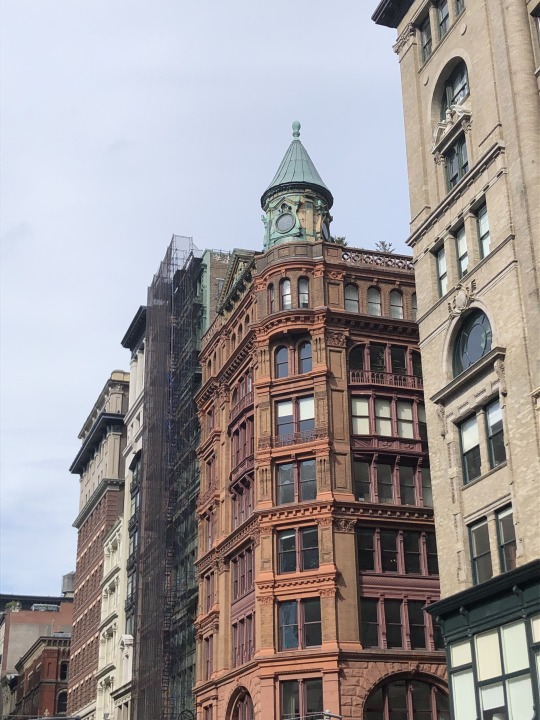
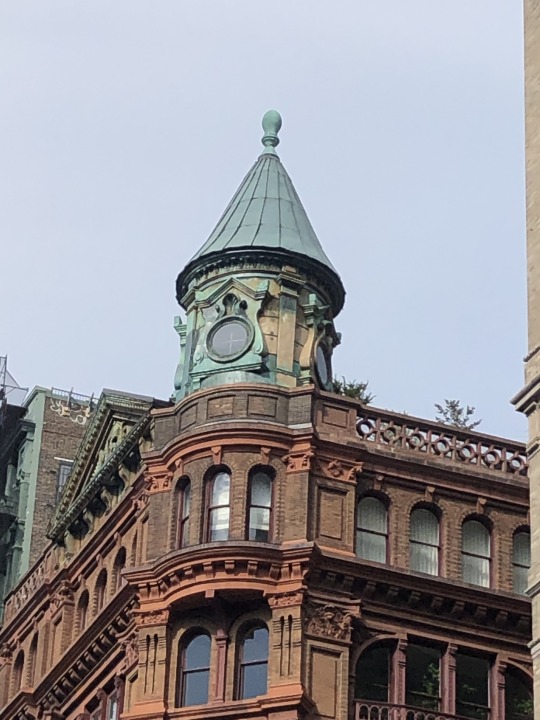
This cute turret room on the top of the building on the NE corner of Bleecker & Broadway. Doing the smallest ammount of googling I am finding out this was Peter Venkman's (Bill Murray) apartment in Ghostbusters 2???? ok.
It just looks like it would be such a whimsical little tower to hang your hair from, idk.
Building Facts: Built in 1891 as the Manhattan Savings Institution, also known as Bleecker Tower. Architect Stephen Decatur Hatch.
Built in the Romanesque Revival style with arches and ornaments, as well as the red sandstone and signature rough cut stone of this style on the base of the building (definitely why it caught my eye, I love Richardson Romanesque/romanesque revival).
The tower on top eludes my brief internet search, but if anyone has pictures of the inside please direct them to me.

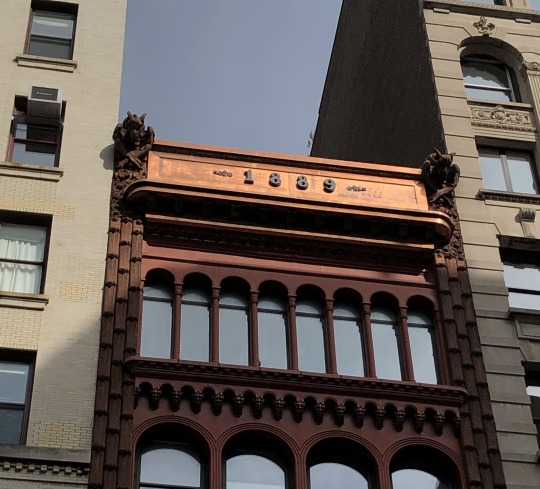
Next up we have this lil copper cutie who looks like it just got a face lift judging by the shiny copper facade on top. It is currently a FootLocker so hopefully they're treating her nice.
Building Facts: (obv) Built in 1889 by Architect Alfred Zucker.
The menacing gargoyles are cute.
(maybe more of an opinion than a fact, but) there used to be a bookstore called Shakepeare's on the bottom floor and the top floors were 1-per-floor studio spaces for artists to live/work in, & I wish that was the case today, not footlocker and high rent.

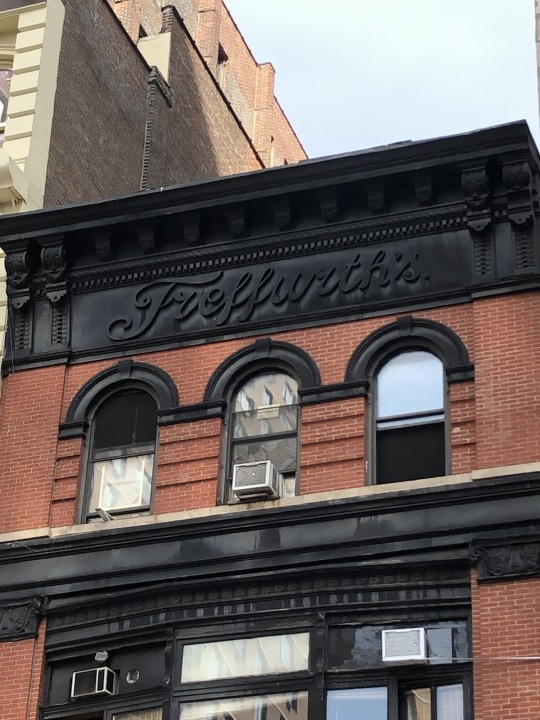
MOVING ON, we've got this pair of cuties. Don't they look like the best of friends holding hands ready to face the world side by side? These guys are 734 (left) and 732 (right) Broadway.
734: Built in 1872 by Architects David & John Jardine in Cast-Iron Neo-Grec style. Until ~2015, the facade had become a rusted brown/black mess until they cleaned and repainted it.
732: Built in 1854 by unknown.
This little building has a complicated past but ill try and summarize the small dig I just did on it. Originally it was a 3.5 peaked-roof building as a set of 3 houses for wealthy sisters (daughters of John Mason) from 732-736 designed by an undocumented architect. It underwent large renovations twice in its life, and one small renovation adding the Treffurth's sign on the roof cornice. The first renovation happened in 1885 by Henry Janeway Hardenbergh (god write a romance novel already would you) and allowed the introduction of E. A. Mac's bookstore to take the place of the earlier saloon on the bottom floor. It was then renovated in 1900 by Bruno W. Berger to the Cast-Iron more or less Renaissance Revival facade we see today.
-
Im going to keep these next ones brief because I'm beginning to lose steam :)

1 Astor Place
Built in 1883 by Architects Starkweather & Gibbs (they also designed the Potter Building). Brick & Terracotta above Cast-Iron ground floor facade.
Originally it was used as a hotel and boarding house with ground floor stores. The harsh vertical motifs on the exterior caught my eye, and I was drawn in even more by the harmony of the design elements and color choices.


10 Astor Place aka 444 Lafayette St
Built in 1876 by Architect Griffith Thomas to the same owner as the above building, Orlando B. Potter, who seemed to have impeccable taste in architecture.
I love the ornate implementation of the painted white Cast-Iron in the arches and pillar ornaments on this one. As well as the eye-popping contrast of the white paint on dark red brick, kind of a juxtaposed take on themes seen in the building above with the way the red and black elements seem to blend in together in harmony.

21 Astor Place aka Clinton Hall
Built in 1891 by George E. Harney.
Originally a Library for the New York Mercantile Library. I love the classic industrial look its such a strong look while they still tried to give elements of the facade some artistic nuance like in the arched windows and dark banding.

Only Caught the side of this Collonade building but doing more research on it, it's owned by the Blue Man Group????
Built 1831 by Seth Greer and historically home to family member's of the Astor & Vanderbilt families, it is the oldest building I took note of today.

And of course, how could I not be drawn into the Cooper Union Foundation building's charm. It stands seemingly so alone in the heart of Manhattan, close to a modern miracle.
Built in 1859 by Frederick A. Peterson in the (what I'm finding now to be called) Rundbogenstil German neo-Romanesque style.
I didn't realize it at the time but this picture also seems to be the back of the building. Still just such ornate and well-balanced design!
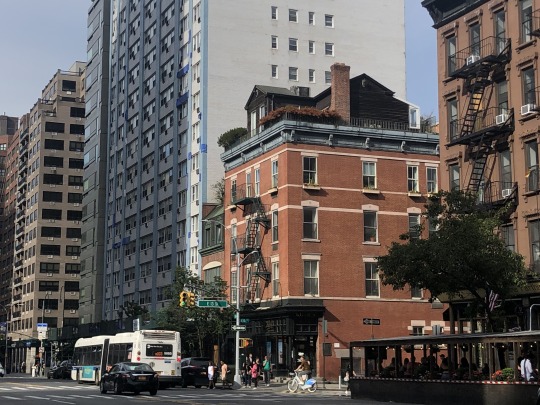


HONORABLE MENTIONS: This house on top of this building and the cute lil mansard moment next to it, which I searched and searched for but I cant seem to remember where it is.
Edit: I found it, there were street signs in the picture whoops. The one with the cottage is 203 E 13th Street also known as Pear Tree Place. And the little guy with the mansard roof is 109 3rd ave, both of them resting above Kiehls 3rd ave.
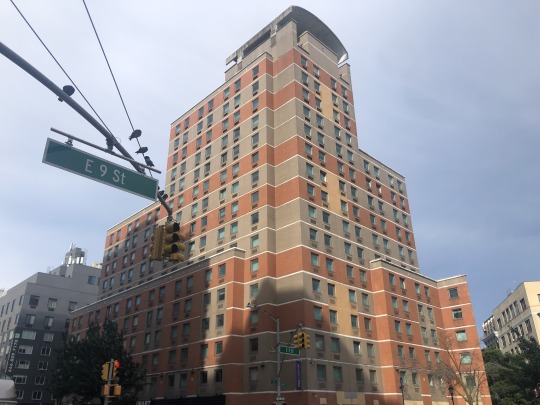
DISHONORABLE MENTIONS: This NYU Alumni building. Who designed you, they should be ashamed. What is going on with your offset, unbalanced terraces in the back? Awful. What was the point of all of these different colored brick patches?? Uncomfortable, awful. It looks like a neutral-toned Duplo set.
Built in 1986 and I cant even find the architect so you know they weren't very proud of it.
#architecture#manhattan#architect#Stephen Decatur Hatch#Alfred Zucker#Jardine#David & John Jardine#Henry Janeway Hardenbergh#Bruno W Berger#Starkweather & Gibbs#Orlando B Potter#Griffith Thomas#George E Harney#Seth Greer#Frederick A Peterson#Bleecker Tower#Manhattan Savings Institution#peter venkman#Ghostbusters II#Queen Anne#Romanesque#Richardson Romanesque#Gargoyles#Cast Iron#Neo-Grec#Greek Revival#Treffurths#Renaissance Revival#Astor Place#Clinton Hall
12 notes
·
View notes